Noelle & Edward
Things To Do

Tourism - CityPASS
Experience the best of Chicago with CityPASS. You’ll get premium admission to the most iconic attractions in the city, hand-picked and packaged into one convenient ticket booklet at a big savings. Because CityPASS is valid for 9 consecutive days starting with the first day of use, there’s no need to rush through each attraction. And skipping most ticket lines means you’ll have more time to enjoy the Chicagoan experience—from the city’s famous landmarks and beautiful architecture to the amazing food and warm Midwestern hospitality.
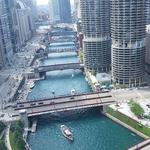
Chicago Architecture Center
Open 9:30am to 5:00pm, every day. The Chicago Architecture Center, formerly the Chicago Architecture Foundation, is a nonprofit cultural organization based in Chicago, Illinois, United States, whose mission is to inspire people to discover why design matters. Check out their website for a series of Tours via boat, bike, bus, or walking as well as their list of current exhibits.
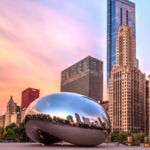
Millennium Park
The iconic Millennium Park is a free public park located in the Loop/ Downtown. Most renown for Cloud Gate "the bean", Crown Fountain, the Pritzker Pavilion, Maggie Dailey Park, Lurie Gardens and the Art Institute of Chicago. On Tuesdays at 6:30 p.m. they play free movies in the park at Pritzker Pavilion! Be sure to check out their website, as there are a ton of street festivals and programs throughout the summer.
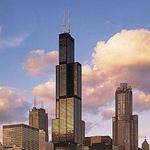
Sears Tower
A visit to Chicago is not complete unless you visit the historic 110-story Sears Tower (Willis Tower). The building designed by architectural firm Skidmore, Owings & Merrill was completed by 1973. It is currently the eighth-tallest building in the world and the tallest in Western Hemisphere. There are 4.5 million gross square feet of floor space, roughly 101 football fields!
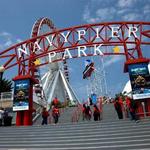
Navy Pier
This recently remodeled Chicago Landmark called Navy Pier is a 3,300-foot-long pier on the Chicago shoreline of Lake Michigan. It is located close to the Downtown area in the Streeterville neighborhood of the Near North Side neighborhood. Ride the ferris wheel, take a boat tour or see a show! Check out their website for details.
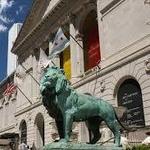
The Art Institute of Chicago
The Art Institute of Chicago, founded in 1879 and located in Chicago's Grant Park, is one of the oldest and largest art museums in the United States. Recognized for its curatorial efforts and popularity among visitors, the museum hosts approximately 1.5 million guests annually. Be sure to make your way through to the Modern Wing to take the Nicholas Bridgeway to Millennium Park.
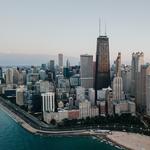
John Hancock Center
Located on the Magnificent Mile is the iconic John Hancock Building that offers breathtaking 360 degrees views of the city skyline and Lake Michigan. The 360 Chicago observation deck is also home of TILT – Chicago’s highest thrill ride – an enclosed moving platform that literally tilts you out over Michigan Avenue from the 94th Floor. With its many interactive learning opportunities on the city’s rich history.

Magnificent Mile
The Magnificent Mile is Chicago’s premier commercial district. The vibrant, bustling area is home to upscale shops, luxe fashion outlets, cool restaurants and posh hotels. Landmarks include the historic Chicago Water Tower, the neo-Gothic Tribune Tower, the terracotta Wrigley Building skyscraper and the 100-story John Hancock Center, which has a rooftop observation deck with fine dining and panoramic city views.

Shedd Aquarium
John G. Shedd wanted to give back to the city in which he had risen from stock boy to president of department store giant Marshall Field & Company. Because every great city in the United States and Europe had a fine aquarium, he decided that Chicago must have the biggest and best. Mr. Shedd imagined a stately marble building and a collection of aquatic animals from around the world that would complement the two world-class institutions already in Grant Park, the Field Museum and the Art Institute of Chicago.
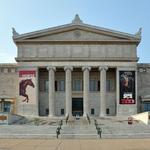
The Field Museum
Chicago played host to the 1893 World’s Columbian Exposition, organized to celebrate the 400th anniversary of Christopher Columbus’s arrival in “the New World.” The six-month event drew 27 million people to the city. A glittering showcase of art, architecture, technology, and global culture, the event introduced the world to the Ferris wheel, newly invented products such as Cream of Wheat, and multitudes of rare objects that would later enter the collections of a brand-new natural history museum in Chicago.
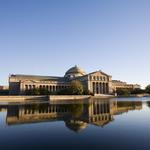
Museum of Science and Industry - Chicago
The Museum of Science and Industry is the only building constructed for the 1893 World's Columbian Exposition's "White City" that remains at the site. Built as the fair's Palace of Fine Arts, it is now home to the Western Hemisphere's largest science museum! The museum contains more than 400,000 square feet of exhibit space and more than 35,000 artifacts.
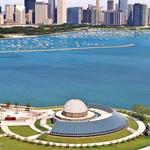
Adler Planetarium
The Adler Planetarium and Astronomy Museum is located on scenic Northerly Island on Lake Michigan. The Adler is a National Historic Landmark and is named in honor of its founder, Chicago businessman Max Adler. The Adler Planetarium is part of Chicago’s well-known Museum Campus along with the Shedd Aquarium and the Field Museum of Natural History. The Adler Planetarium houses a wide variety of exhibits, shows, classes, and interactive activities.
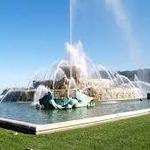
Grant Park
Proudly referred to as "Chicago's Front Yard," Grant Park totals 312.98 acres and is a public park located in Chicago’s central business district in the Loop Community area. A city centerpiece much like New York’s Central Park, Grant Park is home to some of Chicago's most iconic landmarks and attractions. The park includes Museum Campus, the site of world-class museums the Art Institute of Chicago, the Field Museum of Natural History, the Shedd Aquarium and the Adler Planetarium.

Wrigley Field
Most people know Wrigley Field as the home of the Cubs. Located along Clark and Addison Streets, construction began on the 14,000 seat ballpark in 1914 and was completed in 1915 at a cost of $250,000. Originally known as Weeghman Field, the Whales played at the ballpark for just two years before going bankrupt. The Chicago Cubs played at West Side Grounds until Charles Weeghman bought the club and moved them to his ballpark in 1916. The first Cubs game at Weeghman Field was in April 1916. In 1920, Weeghman Field was renamed Cubs Park, and Weeghman sold the club to William Wrigley Jr.

Lincoln Park Zoo
Lincoln Park Zoo is noted for its excellent collection of great apes living together in family groups and its successful gorilla breeding program. Established in 1868, Lincoln Park Zoo is among the oldest zoos in the United States. The 35-acre park houses more than 1,200 specimens of some 230 species of animals. Lincoln Park Zoo is notable as one of the few remaining zoos with FREE admission. It is also walking distance from the beach!

